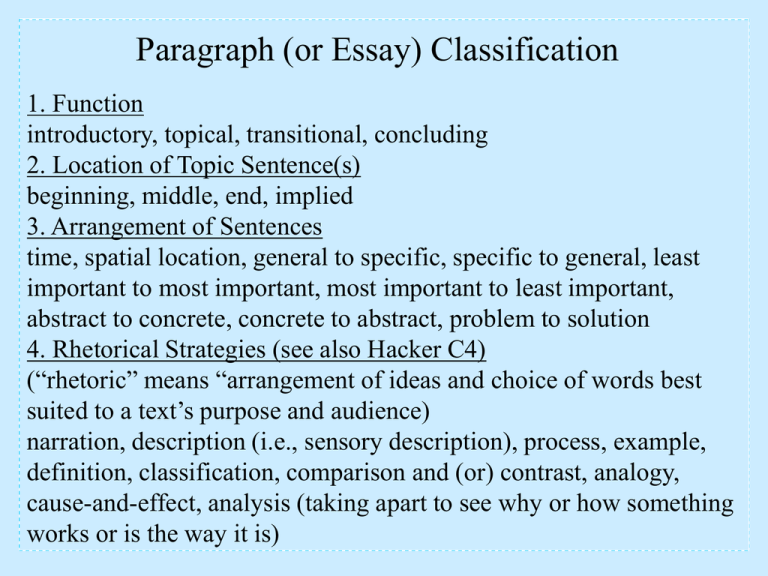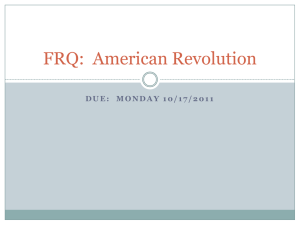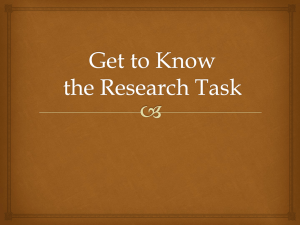Paragraph & Essay Classification Guide
advertisement

Paragraph (or Essay) Classification 1. Function introductory, topical, transitional, concluding 2. Location of Topic Sentence(s) beginning, middle, end, implied 3. Arrangement of Sentences time, spatial location, general to specific, specific to general, least important to most important, most important to least important, abstract to concrete, concrete to abstract, problem to solution 4. Rhetorical Strategies (see also Hacker C4) (“rhetoric” means “arrangement of ideas and choice of words best suited to a text’s purpose and audience) narration, description (i.e., sensory description), process, example, definition, classification, comparison and (or) contrast, analogy, cause-and-effect, analysis (taking apart to see why or how something works or is the way it is) 1. Strategies for Introductory Paragraphs Things to Try: (1) Provide relevant background information (2) Tell a brief (and relevant) story or anecdote (3) Give a pertinent statistic (4) Ask a provocative question (5) Use a highly relevant quotation (6) Make a relevant analogy (7) Define a key term [many more tactics exist] Things to Avoid: (1) Apologize for the author’s lack of knowledge (e.g., “I am not certain that I am right, but I think this opinion is possible”) (2) Use clichés or proverbs (3) Make general statements that the essay cannot refute or prove (e.g., “Friendship cannot exist without love” ; “War is universal”) 2. Strategies for Concluding Paragraphs Things to Try: (1) Use one of the strategies for introductory paragraphs (but avoid using the same strategy in both the introduction and the conclusion) (2) Summarize the main point of the essay (avoid a detailed summary if the essay is less than 2000 words long) (3) Ask the readers for awareness, action, or a similar resolution (4) Look to the future Things to Avoid: (1) Introduce new concepts or facts (2) Reword the introduction (3) Announce what the essay has done (e.g., “In this essay, I have explained the function of rhyme in ‘The Tyger’ ”) (4) Apologize (e.g., “I may not have convinced you” or “Others may disagree” ) 3. Strategies for Transitional Paragraphs Transitional paragraphs help the reader move from a long section on one topic to the next large group of paragraphs about another topic, or to connect the topic to the writing’s overall purpose. Transitional paragraphs aren’t necessary for short pieces of writing.






